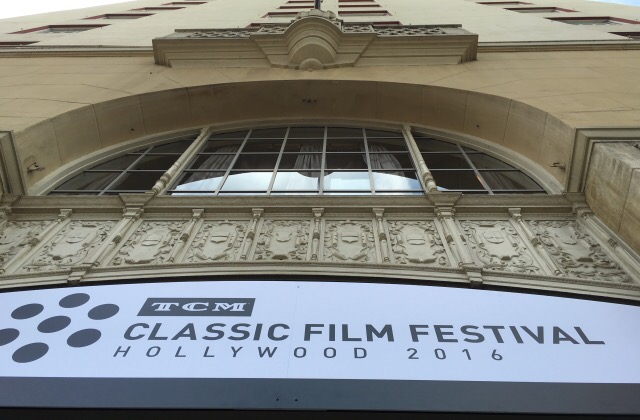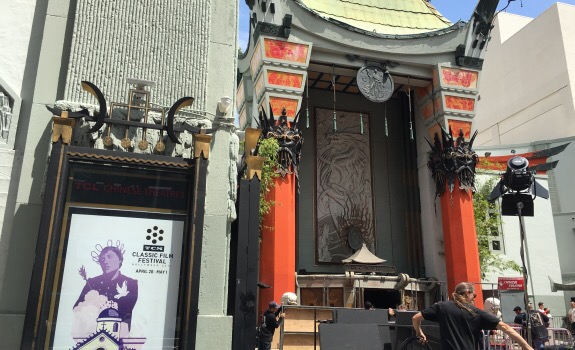Once again I am in the heart of Hollywood catching the annual Classic Film Festival held by the Turner Classic Movies channel. Like every year before, the festival allows audiences the opportunity to see many of the best films of yesteryear as well as hear directly from many of the people involved in their making. Whether it be directors, actors, or film experts as the special guests, it’s a treat for anyone who considers themselves a film buff to be here. The festival is a four day event spread out across all the legendary theaters on Hollywood Boulevard. I am here on Friday, the second day of the festival, with the intent of being here two days this time, instead of my usual one. This will be a two part coverage for you my readers, so hopefully I will have plenty to cover. The focus of this year’s festival is inspirational films, with coming of age stories, underdog films, biblical epics, and movies about beating the odds taking the spotlight. These include classics such as Rocky (1976), It’s a Wonderful Life (1946), Boyz in the Hood (1991), The Pride of the Yankees (1942), and even Bambi (1943). Political films are also highlighted. Last night included a special screening of All the President’s Men (1976), with journalist Carl Bernstein in attendance, as well as Spotlight (2015) director Tom McCarthy. The guest of honor for this year however is Francis Ford Coppola, who in addition to having a film screened at the festival, is also getting his handprints added to the legendary Chinese Theater. His film The Conversation (1974) is the first film I hope to see and if I do, I will give you a detailed account of the presentation. So, let’s see how this festival turns out.
Day 1 (April 29, 2016)
To begin, my first show was the day’s spotlighted feature; Francis Ford Coppola’s The Conversation. This presentation came only a couple hours after the hand print ceremony that was honored to Mr. Coppola. Given the importance of the attendee, this could have been a hard show to get into. And judging by the crowd inside, it indeed was a packed house. Thankfully careful pre planning got me inside, even if it meant waiting in the hot California sun for a couple hours. Anyone without a pass like me should take note; get there early so that you can snag up one of those remaining standby seats. Once inside, the show began with a brief introduction by frequent festival host and TCM regular Ben Mankiwecz. After a brief description of the film we were about to watch and the man who made it, Francis Ford Coppola was welcomed on stage. Naturally, he was met with a thunderous standing ovation. Ben Mankiwecz’s interview went over a few of the director’s career highlights, particularly those from his peak years in the 70’s, in addition to discussing The Conversation itself. Some of the interesting tidbits that Coppola talked about was his often hectic state of mind during those years, being both a professional as well as a family man, and having to balance the two. One of the reasons why Coppola says he made The Conversation was because it was a time when he was interested in telling a personal story, and this was a story that appealed to him, since it deals with issues of stress and privacy in such an interesting way.

Coppola has plenty of story’s to tell about one of the most important eras in film-making and most of the interview only delved into a little bit. Of course The Godfather movies were discussed, and it was interesting hearing from Coppola the experience of dealing with the studio executives who balked at some of his direction on the films. The studio for one thing didn’t want Al Pacino for the part of Michael Corleone; or even Brando for that matter, because he was thought to be too difficult to work with. Of course Coppola got some things through the studio system, and the end result is now considered one of the greatest movies ever made. The amazing thing about The Conversation was the fact that it was made at the same time as The Godfather Part II (1974). Coppola especially wanted to point out the special work done by Sound Designer Walter Murch in the film, which is definitely some stand out work. Coppola also gave us an interesting insight into the performance that was given by star Gene Hackman. He pointed out that Hackman felt uncomfortable in the role of the character. He doesn’t know whether or not it was because Hackman disliked the character himself or because he probably felt it was too reflective of the person he really is, but over time Gene has accepted the performance as one of his best. The movie is one I’ve seen before, but never on the big screen, so this was a special treat to take in. And with Coppola there in person it made the show even better. After a good start to the day, my hope is that the rest of the day can follow it up well.
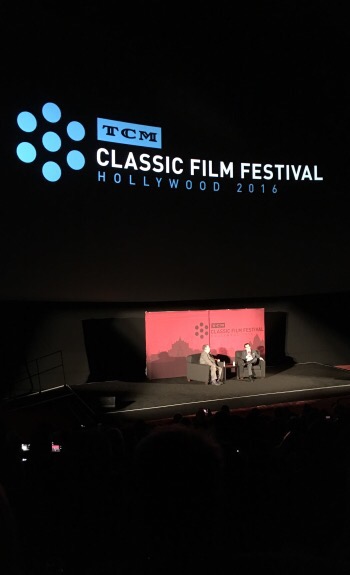
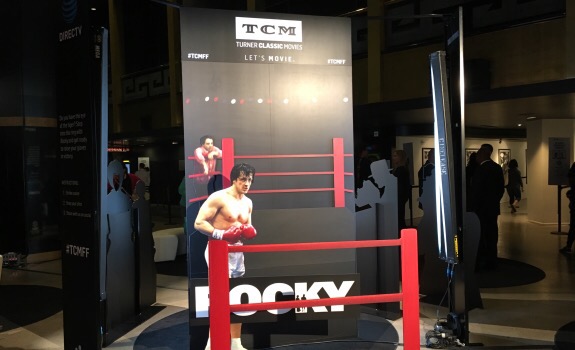
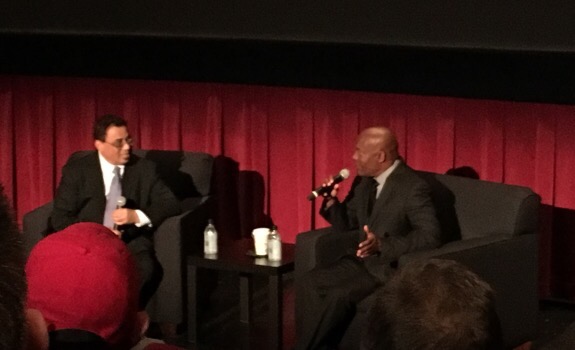

For the second show of the day, I made my way to the Chinese Theater Cineplex, located within the Hollywood & Highland Complex nearby, to watch the screening of John Singleton’s Boyz in the Hood (1991). This is the 25th anniversary of the groundbreaking movie, so it’s inclusion in this festival was both a fitting inclusion for the theme and a great way to celebrate the milestone as well. The pre-show interview was conducted by film historian Donald Bogle, an expert in African-American cinema who has written extensively about the work of directors like Singleton. After his introduction, he welcomed John Singleton and they discussed the making of and legacy about the film in question. Singleton’s recollections were really fantastic to listen to. He was only in his early 20’s when he made the movie, coming just out of film school at USC, and he pointed out that this script was something he was working on all throughout college. The movie, as he put it, was sort of a semi-autobiographical account of his life growing up in South Central Los Angeles. The film obviously has a personal statement to make, and as Singleton stated, this was his attempt to bring a defiant black voice to mainstream cinema; something that was only beginning to become accepted at that time in Hollywood, thanks to the success of filmmakers like him and Spike Lee. Singleton also pointed out his influences, like Gangster flick, Kung Fu movies, and Blacksploitation films. The Blacksploitation films in particular had a big effect on him as he stated in his best line of the interview, “Pam Grier’s breasts steered me into film-making.” (I’m paraphrasing this of course). Like the interview with Coppola, it was great hearing about the film-making progress straight from the director himself. His casting choices were also fascinating; apparently he wanted to have the entire group of NWA to play roles in the film, but in the end, he only managed to secure Ice Cube, who did give a great performance in the end. After the film ended, I tried my best to fit another screening in for the night, which was to be The Manchurian Candidate (1962), with a special appearance by star Angela Lansbury. Unfortunately, this show sold out before I got in, so this concluded my first day of the festival. Even still, I managed to see two legendary filmmakers and watched their movies on the big screen, so I can’t complain. So, hopefully, my Day 2 experience will turn out just as well.
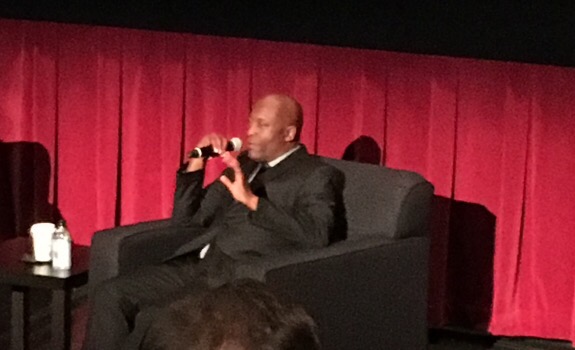
Day 2 (April 30, 2016)

My second day began earlier than the first, because a mid morning showing of One Flew Over the Cuckoo’s Nest (1975) was my next “must see” at this year’s festival. Screened in the same multiplex theater as Boyz in the Hood, Cuckoo’s nest was a popular draw for the morning crowd, but thankfully I was there early enough to secure a seat. Ben Mankiewicz once again acted as host for the screening and he let us know that we needed to wait until after the film to meet the special guests. Those guests turned out to be actors Danny DeVito and Christopher Lloyd, both of whom played supporting roles in the movie; the first big screen role for Lloyd as we learned.  The interview gave us a interesting look into the making of the movie, especially with regards to director Milos Forman’s sometimes unusual tactics. They mentioned that the hospital was a real working one that had authentic mental patients that Forman strongly encouraged his actors his actors to interact with, in order for them to gain more insight into the conditions that their characters are dealing with. The two of them also talked about their experience of working with Jack Nicholson, which could sometimes be an adventure in itself. Naturally, DeVito did most of the talking during the interview. Lloyd maybe said no more than five words total during the interview. Not that it was a bad thing; showing up in the first place was more than enough for him to do to make this showing worthwhile, in addition to Danny DeVito being there. This was a nice highlight for this festival, and one that the festival runners managed to make happen at the last minute; the interview portion wasn’t listed on the programs, and the only way people could know about it is if they followed the festival on social media. Thankfully, I managed to learn about it and work it into my festival schedule. It’s a treat when you can hear about the film from the actor’s perspective, and here we got two from some genuine legends.
The interview gave us a interesting look into the making of the movie, especially with regards to director Milos Forman’s sometimes unusual tactics. They mentioned that the hospital was a real working one that had authentic mental patients that Forman strongly encouraged his actors his actors to interact with, in order for them to gain more insight into the conditions that their characters are dealing with. The two of them also talked about their experience of working with Jack Nicholson, which could sometimes be an adventure in itself. Naturally, DeVito did most of the talking during the interview. Lloyd maybe said no more than five words total during the interview. Not that it was a bad thing; showing up in the first place was more than enough for him to do to make this showing worthwhile, in addition to Danny DeVito being there. This was a nice highlight for this festival, and one that the festival runners managed to make happen at the last minute; the interview portion wasn’t listed on the programs, and the only way people could know about it is if they followed the festival on social media. Thankfully, I managed to learn about it and work it into my festival schedule. It’s a treat when you can hear about the film from the actor’s perspective, and here we got two from some genuine legends.



Next up, I went back to the marquee venue of the Chinese Theater and waited in line for the presentation of Rogers and Hammerstein’s The King and I (1956). There was a window of opportunity where I could have fit in another movie, which if I had it would’ve been Howard Hawks’ The Big Sleep (1946) , which was playing at the Egyptian down the street. Instead, because of the sell-out I experienced the night before, I decided to play it safe and wait in the standby line for over three hours, just so I could have a chance this time. Thankfully, I was in the front 20 of the line, and it was early enough to get a seat for the show. As the Chinese Theater once again had a jam packed crowd in attendance, we were treated to a pre-show interview, this time conducted by film critic Leonard Maltin. His guest was one of the film’s stars, Rita Moreno; a legendary actress of both the stage and screen who is still active today at the age of 84. She played the role of Tuptim in the movie and as Maltin pointed out, this was only one of the trio of classic Hollywood musicals that she played a part in; the others being Singin’ in the Rain (1952) and West Side Story, which won her an Oscar. She shared with us her experience working on this movie, which she fondly remembers. Some of the interesting tidbits she shared was the difficult orchestration the film-making team had to pull in order to stage the famous ballet sequence from the movie, as well as her experiences with her co-stars. Her story about Deborah Kerr flashing her panties at her in the dressing room was an especially hilarious story. She also mentioned her early years in Hollywood, including her brief fling Marlon Brando, something which allowed her to slyly plug her new memoir. Overall, the interview was a treat and it was a perfect prelude to the feature itself. Though I had seen The King and I before, I hadn’t watched it on a big screen until yesterday, and on the Chinese Theater’s massive screen, this was an especially worthwhile show. Definitely worth baking outside in the California sun for.


Because of the extra-long length of The King and I, I only had a 10 minute window to get to my next and final show. I quickly shuffled out of the Chinese Theater and rushed down the world-famous Walk of Fame to the Egyptian Theater a couple blocks away. Thankfully, it was just enough time and because it was a late night show (9:30pm) in a non-marquee venue, there was plenty of seats still available. To end my festival experience, I chose to do something unconventional as watch what was essentially a lecture presentation instead of a full movie. This interested me because the entire presentation was on the History of Widescreen film. The presentation was put on by Leonard Maltin, who showed up sporting a VistaVision logo t-shirt, and he was assisted by film technician and historian Christopher M. Reyna. Together, they went through all the different widescreen film stock that has been used by filmmakers in and out of Hollywood over the years. They began with some of the earliest know examples of Widescreen, including the famed Polyvision used in French filmmaker Abel Gance’s Napoleon (1926), which was presented in a clip projected on 70mm. Next, they talked about the earliest known Widescreen film to still exist today, titled The Corbett-Fitzsimmons Fight from 1897. From there they showed 1930 film The Big Trail, which was shot on an early process known as Grandeur 70. After that came more popular processes like Cinerama, Cinemascope, Todd-AO, Technirama, VistaVision (Leonard’s favorite), and Ultra Panavision, and examples of each was shown to us with clips from movies like The Robe (1953), The Bridge on the River Kwai (1957), Sleeping Beauty (1959), Oklahoma (1956), and To Catch a Thief (1956). The collection of clips really gave a good sense of the fascinating history of the process and it was treat to see them on a big screen as well. The power point presentation also did a good job of not feeling boring and helped to give us more visual details of the mechanical aspects behind the creation of a wider frame. Thankfully, the show concluded with some of the most spectacular scenes ever put on Widescreen film and that was the Raid on Aquaba scene from Lawrence of Arabia (1962) and the chariot race from Ben-Hur (1959). Maltin even gave us a special surprise with a Tom and Jerry cartoon that was made in Cinemascope. It was a nice, unconventional way to end my festival experience for the year, and I’m pleased that the festival devoted time and effort to putting this one together. It spoke to both the film buff and the one time movie theater projectionist that I once was.

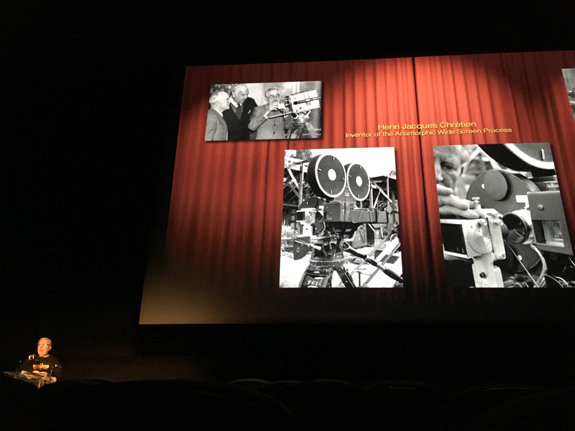
So, as I’ve said in other years, if you are a resident of Los Angeles, or are just passing through, and you’re a devoted fan of classic films, this is a experience not worth passing up. There are so many great films selected for this each year, and the fact that the festival runners go out of their way to bring in the people involved who made them to be a part of it only makes this even better. Even though I had the unfortunate bad luck to miss out on that Manchurian Candidate screening, it still didn’t ruin my overall experience this year. I still got to see Francis Ford Coppola, Rita Moreno, Danny DeVito, Christopher Lloyd and John Singleton in person, and that made it all worth it. If you have the money, a festival pass would be worthwhile, especially ones that get you VIP access. But, the festival is also open to the casual viewer too, just as long as you don’t mind waiting in line for the last available seats. So far, I’ve been going the standby route, and I’ve found a good seat in each showing I’ve been too. Hopefully when the festival returns next year, I will be able to include more days and hopefully take in the full experience. But, this was my first go at attending multiple days at the fest, and it turned out to be great. I hope you’ve enjoyed my account of this year’s festival. I hope the selection of film’s at the next one will be just as strong as this year’s.

